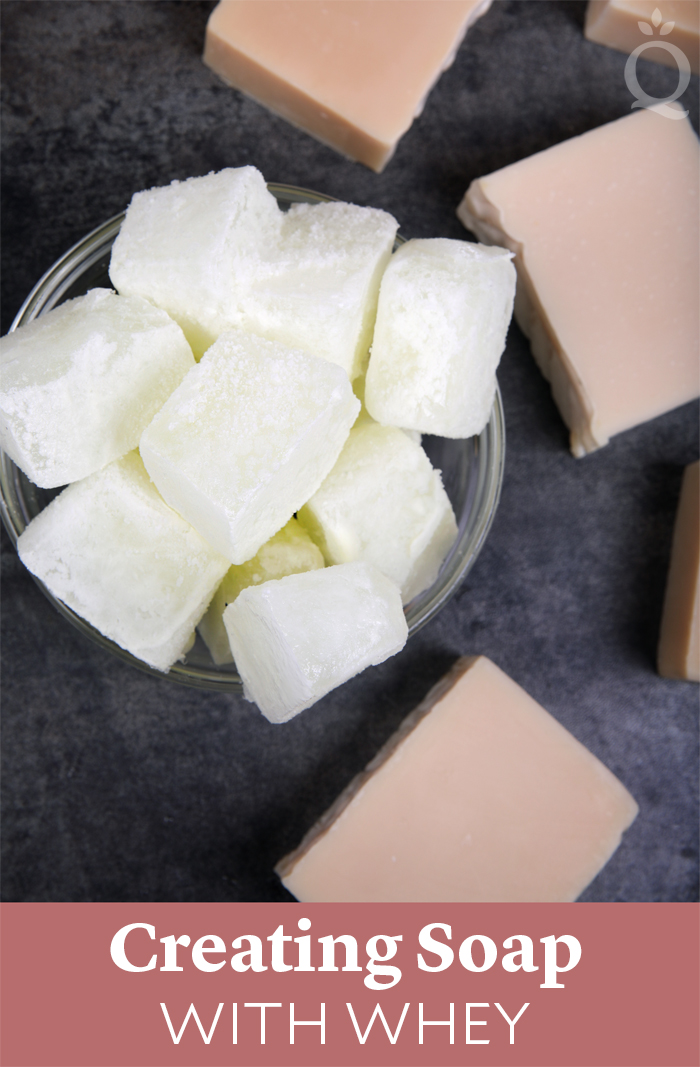
We love experimenting here in the Bramble Berry studio. If there are leftovers, there’s a good chance they’ll wind up in soap. We’ve made recipes with La Croix, coffee, kombucha, and more.
Bramble Berry CEO and Founder Anne-Marie has been trying all things DIY and sharing the results here. One of the first things she tried was making cheese. That process leaves you with a lot of whey, which is the watery part of milk that remains after curds are formed.
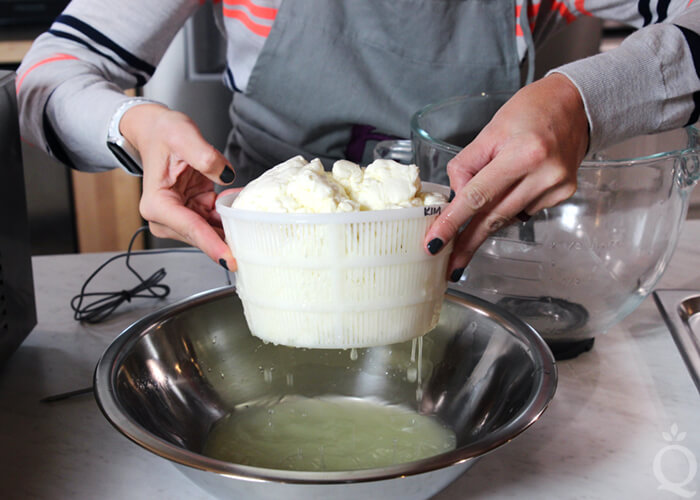
There are two types of whey. Sweet whey is the liquid that comes from making cheese with rennet, which includes cheddar and Swiss. Acid whey comes from cultured dairy products like sour cream or yogurt. Both are packed with protein, vitamins, and minerals, so we didn’t want it to go to waste.
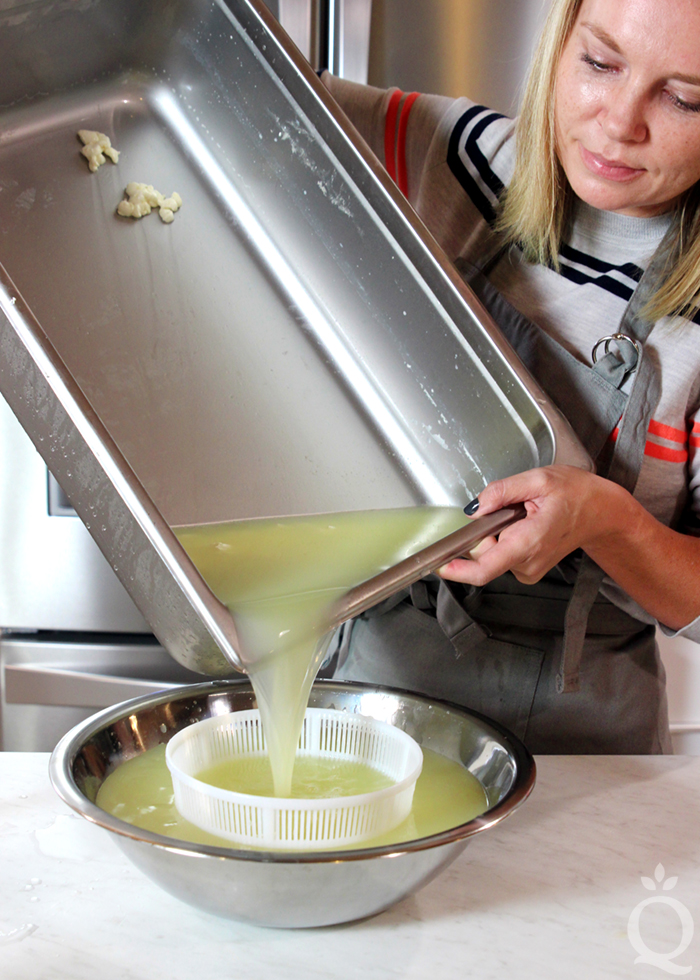
We decided to replace the distilled water in cold process soap with sweet whey. Knowing that temperatures are important for milk products, we tested several options. The oils were around 105-110°F for all of the tests.
The temperatures shown below were taken after the lye was fully mixed in. For the 86°F bar, we placed frozen cubes of whey into a container, then placed that container in an ice bath while the lye was added. The 93°F bar had frozen whey but no ice bath. The 99°F and 110°F bars had refrigerated whey placed in a cold water bath with a few ice cubes. The 135°F bar was a slushy consistency with no water bath – basically we let the whey cubes sit at room temperature for a few hours before adding the lye.
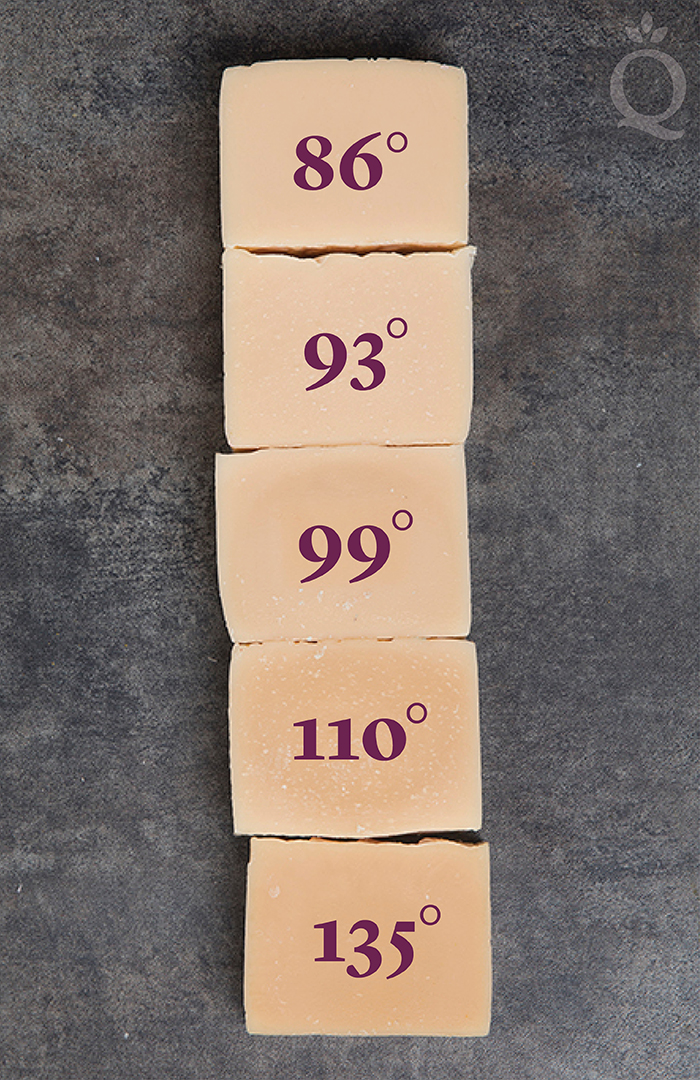
As you can see, the natural sugar in whey scorches at higher temperatures. That causes a darker color and an unpleasant smell. After our experiments, we found the option we like most is freezing the whey and placing it in an ice bath. After the soap is in the mold, we put it in the freezer for 5-24 hours. That will give you the most neutral color to work with and the smell won’t be as bad. It’s the same method we recommend for milk.
As for the way the bars feel, we didn’t notice a huge difference between whey and distilled water. Whey does add a slightly creamy feeling and nice lather to the soap, but not as much as something like goat milk or cow milk. Basically, we enjoyed experimenting with an alternative liquid and we made sure none of the whey went to waste.
If you don’t want to use it in soap, you’re in luck – you can use it in smoothies, bread, salad dressing, etc. Find a list of 36 ways to use leftover whey in this Don’t Waste the Crumbs blog post.
How do you use leftover whey?




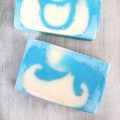
I was wondering if a person bought a soap base or glycerin base, can you add goats milk to it?
Trying to find a way my grandkids can help without the lye, but using my own milk in the mix.
Thank you
sorry this question wasn’t related to Whey
We don’t recommend adding milk to melt and pour soap. Since it has already gone through saponification, adding new ingredients doesn’t work very well. The milk will go bad in the soap.
This post explains it in greater detail: https://www.soapqueen.com/bath-and-body-tutorials/tips-and-tricks/purees-fresh-ingredients-melt-pour-soap/
Just made a whey soap using cold temperatures. No fragrance, added dried ground chamomile & honey had no problems except took quite a while to emulsify and come to trace, but did use full water amount. Beautiful very pale yellow color. Haven’t tryed it yet has to cure. Used 80% coconut oil and 20% sweet almond oil and 30% superfat. Will try end piece soon.
I make a lot of tofu, and in the process of making it after adding the coagulant to the soymilk I’ve made, I’m left with a “whey” after scooping out the soy curds. Do you think this would work?
We haven’t tried that so I’m not sure – I would recommend making a small test batch using the freezing method in this post. That’s a great way to see if it works and also if you like the feel of the final bars.
How does the soap smell?
I ask because I make kefir, and whey can separate out of this. I’ve been thinking about using the whey in cold process soap, but was hesitant.
I once made soap using butter as a fat and the soap smelled like Parmesan cheese. Really stinky. And kefir acts kind of like a buttermilk in recipes. I’m curious if the why gives off a strong ‘off’ smell.
When the lye and whey are first mixed, it will give off a strong ammonia smell. However, after the soap cures for about 6 weeks that smell goes away and it’s not easy to detect in the final bars. Adding a fragrance or essential oil helps too.
I have just used it recently too! I did not freeze it at all. it was cold from the fridge, and I put the bowl in the ice bath while slowly adding lye and stirring. After that, I did gel my soap. Had no problems with it whatsoever. 🙂
Oh that’s awesome, have you tried the bars yet?
Yes! The lather feels wonderful. 🙂
I just give mine to my chickens. When chickens shed their feathers (a process called moult) they require a lot of protein to grow back the shed feathers!
Oh that’s interesting – whey has so many good uses. Glad to know it can be used for chickens too!
I have been using whey in HP soap after the cook in place of Na Lactate. I make my own Greek yogurt and have plenty of whey leftover! Can’t wait to try it in CP! Can’t believe I hadn’t thought of that as I love to make goat milk soap! Thanks!
You’re welcome, have fun experimenting Velda!